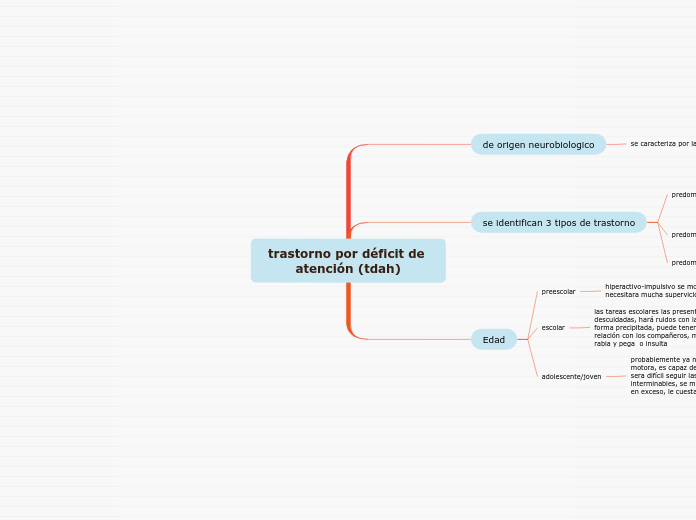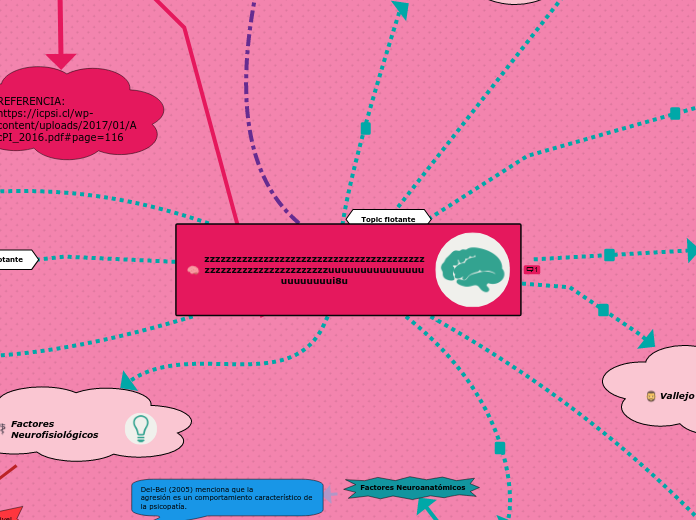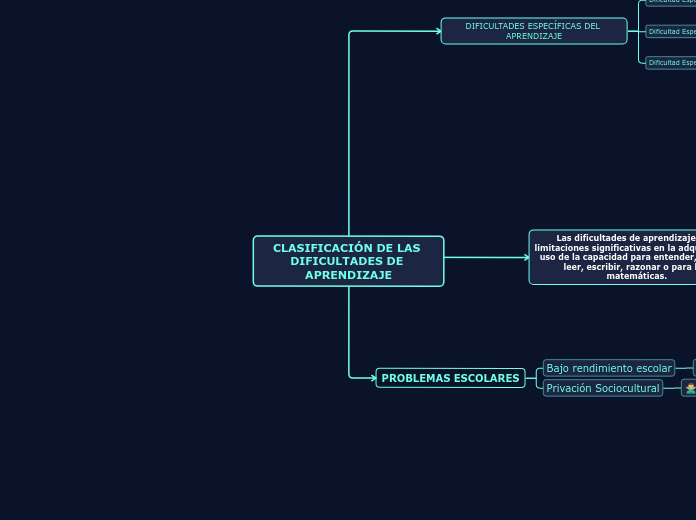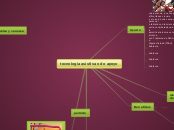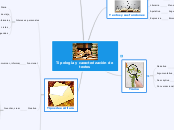trastorno por déficit de atención (tdah)
To name your story, you have to think about the overall message and what you want your audience to understand from the story. Also, make it relevant and easy to remember.
Edad
The ending of a story is essential. We all know that if the ending is weak, what happened before loses its importance. So make it unpredictable, but fair. A resolved ending answers all the questions and ties up any loose threads from the plot.
adolescente/joven
probablemente ya no se percibe la hiperactividad motora, es capaz de permanecer sentado aunque le sera difícil seguir las clases, ya que les resulta interminables, se mantendrá la impulsividad, hablar en exceso, le cuesta controlarse.
escolar
This is the closure section of the story.
See examples of possible outcomes below:
- all problems have been solved
- it's clear how each one of your characters ends up
- your main character is transformed by the challenge
las tareas escolares las presentara sucias y descuidadas, hará ruidos con la boca, contestara de forma precipitada, puede tener problemas de relación con los compañeros, muestra fácilmente rabia y pega o insulta
Try answering these questions to come up with a closure:
- Have all the problems been solved?
- Is there a clear picture of what happens with each character in the story?
- Has the challenge transformed your main character?
- How do the characters feel in the end?
preescolar
This is the moment when the main character surpasses the last obstacle and finally faces their greatest challenge.
The climax usually follows one of these patterns:
- realization
- resolution
- choice
Type in your answer.
hiperactivo-impulsivo se mostrara muy movido e imprudente, necesitara mucha supervicion
se identifican 3 tipos de trastorno
The middle of the story is where you add layers of complications that will lead to the end. Reveal more about the character's journey. Did their personality go through changes? How did they overcome the challenges? And as you build up the story’s central conflict, make it more personal to that character. Also, from the middle act, you have to lead into the final act.
predominante convinado
predominante hiperactivo-impulsivo
There wouldn't be any tension and excitement in your story if there weren't any obstacles in your character's way.
se mueve de un lugar a otro en momentos inapropiados, mueve manos y pies en exceso, responden de forma precipitada,, preocupa mucho las manifestaciones de agresividad tanto en el aula como dentro del marco familiar.
A story is nothing more than a character overcoming a series of difficulties to reach the desired goal. Obstacles usually create suspense and conflict. In overcoming obstacles, there is growth: weak becomes strong; hatred turns into love; sadness into happiness; wrong into right; lies into truth; or evil becomes good.
See a few examples below:
- stopping a meteor
- finding a killer
- finding love
predominante inatento
Your character(s) need(s) motivation in order to solve the challenge(s).
acostumbra a distraerse y a valorar cualquier ruido, en el aula se muestra pasivo, pasa desapercibido y no aprende al ritmo esperado , pasa por un niño poco inteligente (aunque no sea cierto)
Secondary characters might also have motives that lead them to cross paths with the main character or which might trigger them to help the main character.
de origen neurobiologico
In the beginning of the story (or the exposition), you will need to introduce the setting and characters. You might also want to introduce the main conflict. This part of the story is important because it gives the reader necessary background information and maybe even a first insight into a character’s personality.
se caracteriza por la presencia de 3 síntomas
Characters are essential to a good story. Usually, the protagonist(s) is/are the most affected by the plot. Introduce a character by focusing on their actions, interests, and occupation, as the physical appearance doesn't make a difference in most cases.
hiperactividad motora y/o vocal
impulsividad
déficit de atención
Type in the name of your character.
